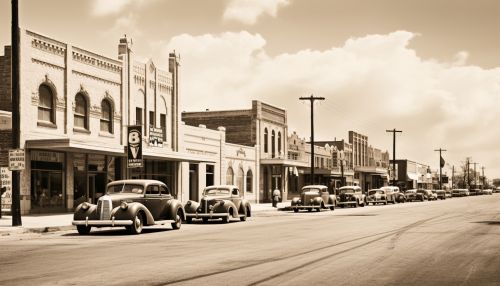Route 66 (United States)
History
Route 66, also known as the Main Street of America or the Mother Road, was one of the original highways in the U.S. Highway System. Established on November 11, 1926, the highway, which became one of the most famous roads in America, originally ran from Chicago, Illinois, through Missouri, Kansas, Oklahoma, Texas, New Mexico, and Arizona before ending in Santa Monica, California, covering a total of 2,448 miles (3,940 km).
The idea for Route 66 began in the early 20th century as a need for a national highway system was recognized. Cyrus Avery from Tulsa, Oklahoma, and John Woodruff from Springfield, Missouri, are credited with promoting the idea of an interregional link between Chicago and Los Angeles that would serve both the industrial northeast and the agricultural Midwest.


Route Description
Route 66 was designed to connect the main streets of rural and urban communities along its course, providing a major path for those who migrated west, especially during the Dust Bowl of the 1930s. The highway was also a significant path for the trucks that carried agricultural products from the west to the east.
The route begins in Chicago, at Grant Park on Adams Street in front of the Art Institute of Chicago. From there, it heads southwest through Illinois before turning westward through Missouri, Kansas, and Oklahoma. The route then takes a more southwestern direction, passing through the Texas Panhandle, New Mexico, and Arizona before ending at the Santa Monica Pier in California.
Cultural Significance
Route 66 has held a special place in the American consciousness from its beginning. Its role in facilitating the westward migration of the mid-20th century, as well as its connection to the rise of the American automobile culture, have made it a symbol of freedom and the open road. The highway has been featured in numerous songs, films, and television shows, including the hit song "(Get Your Kicks on) Route 66" and the 1960s television show "Route 66".
Decline and Decommissioning
With the advent of the Interstate Highway System in the 1950s, Route 66 gradually saw less traffic. Many segments of the road were bypassed by modern interstates. By the late 1960s, most of the rural sections of Route 66 had been replaced by I-40, I-15, and I-44. The highway was officially decommissioned (that is, officially removed from the United States Highway System) on June 27, 1985.
Revival and Preservation
Despite its decommissioning, much of Route 66 remains to be driven. Various preservation groups have worked to preserve and restore the historic features along the route. In 1999, President Bill Clinton signed the National Route 66 Preservation Bill which provided for $10 million in matching funds for preserving and restoring the historic features of the route.
